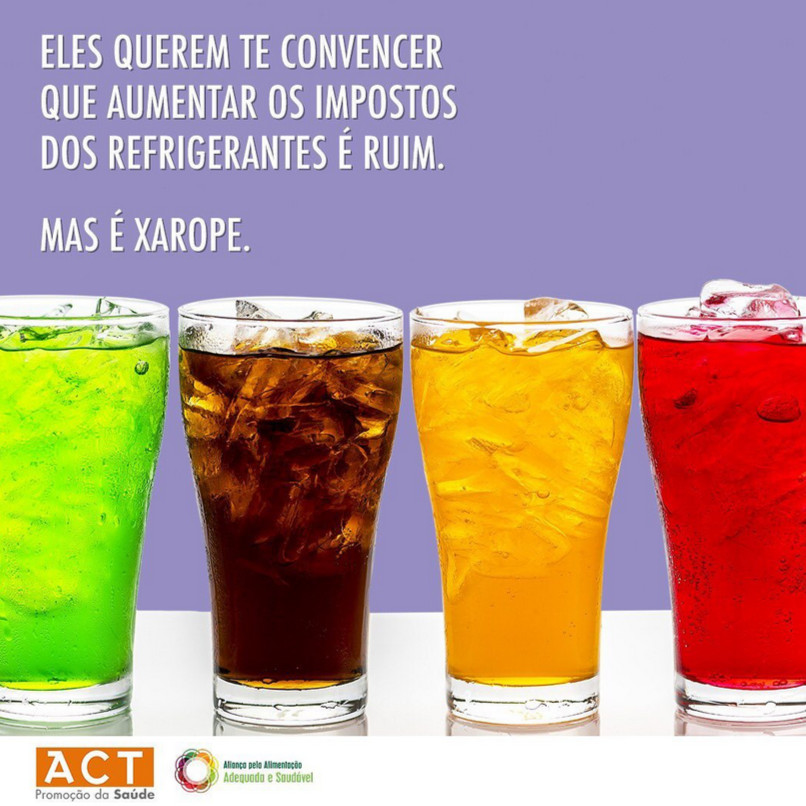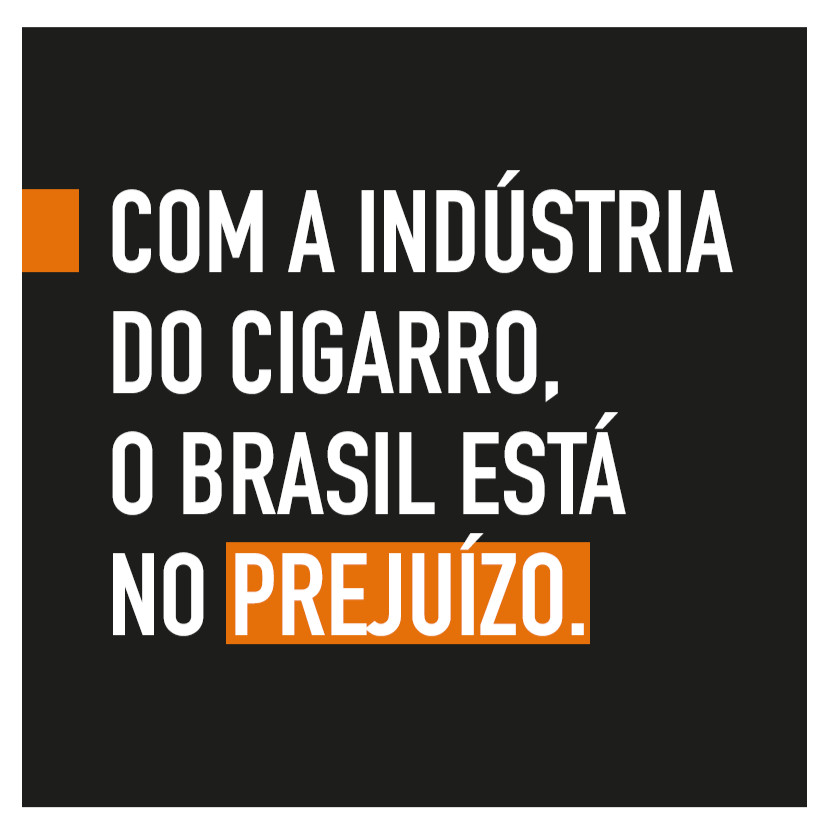monitorACT | Edition 17
28.03.23ACT

Editorial
The consumer market constantly changes to remain attractive to its clients. Products can become trendy, objects of desire, or fade away, depending on the time and the strategies adopted to make them what they are. However, it should not be accepted that companies offer products that put consumers' health, the environment, and human rights at risk, besides trying to reject or bar regulations.
This special edition of MonitorACT focuses on the alcohol industry and its intersection with the tobacco and ultra-processed food industries. There is an infinity of old products with new guises and problematic production chains that even include child labour and slavery.
In the article Non-alcoholic drinks, sugar-free sodas, a cereal bar to prevent drunkenness. Does it work?, Bruna Kulik Hassan analyzes the new “healthier life” trend brought on by the sugary and alcoholic drinks industries, which is incompatible with the health consequences caused by their products. The beer industry, for example, now offers products with less carbohydrates, less calories, gluten-free, or non-alcoholic, and has even launched a cereal bar that promises to prevent drunkenness - and these new products have arrived along with powerful marketing strategies, of course. After all, they should become objects of desire, especially for young adults and adolescents.
Mariana Pinho e Victória Rabetim highlight the addictive substances added to these products in From tobacco to alcohol: the power of additives to addict new consumers. Flavoring additives are used to attract new consumers and promote experimentation - and, along with the creation of beautiful and trendy designs for the packages, they are a fundamental part of the strategies adopted by the companies to win over new consumers and make them loyal to their products.
Lastly, we would also like to draw attention to the fact that companies that manufacture harmful products are investing a lot of money in actions to improve their images, something we have already addressed in previous editions. Now, Laura Cury and Vitória Moraes analyze strategies that have no impact on the businesses’ structure, but look good in the photo. Their article, Sankofa: Ambev's beer and the Ghanaian proverb, shows how the new product of the company uses African ancestry to sell. Real structural changes, however, cannot be found.
Enjoy your reading!
Anna Monteiro
Communications Director
Non-alcoholic drinks, sugar-free sodas, a cereal bar to prevent drunkenness. Does it work?
By Bruna Kulik Hassan
The newest trend in the alcohol industry is trying to adapt their products to the search for a healthier lifestyle. For that end, large companies are undertaking huge efforts to create so-called healthier options, many times linking a healthier lifestyle solely to the consumption of few calories.
Considering beers, the most consumed alcoholic beverages in Brazil, innovations include products with less carbohydrates, less calories, gluten-free, or non-alcoholic, along with marketing strategies that associate these products with a healthier lifestyle. Ambev’s Stella Artois launched its gluten-free version in 2020. Heineken’s non-alcoholic beer, also known as “Heineken 0.0”, announced a partnership with Max Verstappen, two-time F1 champion, for him to become an ambassador of the non-alcoholic beer - which, it seems, is also sugar-free. Interestingly, in the company’s website, frequently asked questions about Heineken 0.0 include “’Zero’ soft drinks are sugar-free. Are ‘zero’ beers sugar-free?”
Max Verstappen in a Heineken 0.0 campaign
Still on the trend of promoting healthier lifestyle campaigns, another action by Heineken, named “0.0 Alcohol - 0.0 Barriers”, was performed in Rio de Janeiro in January to reward responsible drivers. During the event, drivers that passed in a tollbooth in Via Lagos Highway with a pack of Heineken 0.0 were exempted from paying the toll.
Among the beverages aimed at young people, the healthier lifestyle trend takes a different path. Other formulations combine alcohol and sugar, as in the ready-to-drink beverages by Beats, from Ambev. The image below shows that sugar is the second most used ingredient in Gin and Tonic Beats, following carbonated water. The ingredients are listed in descending order, according to their quantity.
Source: Pão de Açúcar
Regardless of whether or not they contain sugar, alcoholic beverages do not need to include a nutritional information table on their labels, as stated in the Brazilian Health Regulatory Agency Collegiate Board Resolution No. 429, from October 8, 2020, and in the Normative Instruction No. 75, from October 8, 2020, which define the new food nutritional labeling regulation, that is in force since October, 2022. As the regulation states, the nutritional information table is optional in alcoholic beverages - it is sufficient to inform merely the total energy value. The new front-of-package labeling adopted in Brazil, which includes a magnifying glass on the front of the package of food products that contain a high amount of added sugar, sodium, and/or fat, is not applied to alcoholic beverages. Thus, in Beats’ case, the consumers will only know that the product contains added sugar if they read very carefully the list of ingredients, but there is no way to know the total amount.
Even if consumers do not know if Beats contain added sugar or not, in the Carnival of 2022 the brand announced the release of “On By Beats”, a cereal bar able to reduce the alcohol absorption by the body in up to 20%, to compensate for a possible excess of consumption. Thus, Ambev can sell two products at once: a product that intoxicates and another one to “de-intoxicate”. It is a perfect match between Big Alcohol and Big Food.
Considering the new products released by the giants of the sector, it will come as no surprise if alcoholic beverages without alcohol, but with added sugar - or would they be only sugary drinks? - appear, promising an infinity of functional effects to give consumers more energy, happiness, awesomeness, balance, and a multitude of other elements that will turn them into superheroines in Eden. Back to Earth, if alcoholic beverages without alcohol and with added sugar are indeed released, would they be exempt from the nutritional labeling regulation? We must wait and see, and keep monitoring the future of these drinks.
From tobacco to alcohol: the power of additives to addict new consumers
By Mariana Pinho and Victória Rabetim
As if the plethora of food additives in ultra-processed products that invade the shelves of supermarkets and the tobacco additives used to attract young people to smoking were not enough, there are also flavor additives in alcoholic beverages.
Flavored alcoholic beverages were first released around 1980, including Smirnoff Ice and Bacardi Silver, among others, which are a mix of alcohol and flavorings. Before that, traditional beers, wine, and spirits were the most common alcoholic beverages.
Flavor and aroma additives have a very clear role: they are used to attract consumers and promote experimentation. In other words, they are products designed to encourage young people to become regular drinkers. Moreover, they are a marketing strategy, as the flavors added are always exhibited in the package - and the package is definitely an important marketing element that influences the purchase decision process.
Flavored beers even have a nickname now: “terpene” beers. It turns out that some flavored alcoholic beverages may contain synthetic substances and ingredients isolated from herbs and spices, in addition to the natural beverage compounds. The process used to obtain artificial flavors and fragrances are usually trade secrets in the industry. Over 1300 aroma compounds for alcoholic beverages have already been recorded. That is an explosion of flavors that harm health.
Since the additives formulations are trade secrets, there is no transparency regarding the products’ actual composition. Artificially produced aromas and flavors are chemicals that may cause many more effects than an explosion of a mango flavor, for example; they might be harmful to health and induce consumers to error: “this beverage contains fruit, fruits provide vitamins and are good for our health, so this beverage offers me some benefit”. With or without additives, however, no alcoholic beverage is beneficial.
Back in 2010, the United States Food and Drug Administration (FDA) warned four companies that the caffeine that was added to their malt beverages was an “unsafe food additive” and the seizure of their products was possible under federal law. This shows that this is an old topic that is present in many countries of the world and threatens global health.
Zelus Beer: https://exame.com/casual/novas-cervejas-de-atleta-bebem-na-fonte-dos-energeticos/
Similarly to what is done with cigarettes, additives are included in alcoholic beverages for different purposes, besides flavoring - color additives are the first example that comes to mind. Another example is a beer for athletes with “electrolytes, buckwheat and bee pollen, to diminish damages caused by dehydration” featured in an article published in Exame, a Brazilian magazine, and mentioned in the 15th edition of MonitorACT.
Information regarding non-flavoring additives is less available. Sometimes, additives used in the cultivation process can still be found in the beverages: in 1988, a study by the International Agency for Research on Cancer (IARC), from the World Health Organization (WHO), found that fungicides with arsenic applied in vineyards may cause elevated levels of arsenic in grapes and wines and, as a consequence, also raise the carcinogen levels in the blood of consumers.
Another example took place in the United States. Findings show that the industry manipulated substances in beers and interfered in the classifying process so that “supersized alcopops” - beverages with a large alcohol volume that are sold at low prices - continued to be classified as beers instead of spirits.
Manufacturers’ production process and industry lobbying efforts seem to have subjugated and shaped federal law enforcement to allow FABs [Flavored alcoholic beverages] to remain misclassified as beer, which makes these products more affordable and accessible to youth. This is a significant public health concern because (a) accessibility and price are two chief factors associated with adolescent consumption of alcohol and (b) these products are formulated and marketed to be attractive to novice or first-time drinkers.
It is worth noticing that the Brazilian Health Regulatory Agency has forbidden the use of flavor additives in cigarettes since 2012. However, legal challenges raised by entities that defend the interests of the tobacco industry have prevented the ban’s enforcement, unfortunately. When the resolution was first approved, Brazil was the first country in the world to ban menthol. The fact that the norm hasn’t been enforced ended up making way to absurdities such as the promotion of an electronic cigarette with vitamins. Ah, but this is a subject for another article - and it has been discussed in a podcast from Ciência Suja about tobacco additives.
Sankofa: Ambev's beer and the Ghanaian proverb
By Laura Cury and Vitória Moraes
To get to the essence of this article, we need to go back to 2020 - a year marked by historical events such as Brexit, the beginning of a pandemic caused by an unknown virus, and many manifestations asking for racial justice all over the world. Since the murder of George Floyd, a black American killed by a white police officer in Minnesota, the debate about racism and racial inequalities has taken on a large proportion in several countries. A few months later, João Alberto de Freitas was assaulted and asphyxiated by two security guards at a Carrefour supermarket in Porto Alegre.
Growing popular demands asking for measures to fight racism led governments and companies to take action. Companies from different sectors, including the ultra-processed food and beverages industries and the alcohol industry, such as Ambev and McDonald’s, have joined the Movement for Racial Equity (Mover), whose goal is to become a tool to fight racism and reduce racial inequalities in Brazil.
We have seen growing commitments to amplify racial and ethnic diversity in institutional spaces, a greater number of black people and Afro-Brazilian symbols in advertising pieces, and the sponsorships of events created by and for the black population. However, these are often marketing strategies - known in Brazil as blackwashing - that do not drive structural changes; they only seek to make the pieces more attractive in terms of racial equity, similarly to what is done with the use of greenwashing strategies, which encompasses environmental sustainability practices. With blackwashing, the company publicly advocates in favor of diversity and racial rights in advertising campaigns and corporate responsibility actions, but most of the time such diversity is not reflected in their own staff, especially in high-ranking positions, as shown in studies and reports. An article published by O Joio e o Trigo and Alma Preta Jornalismo showed that black people are still a minority in leadership positions and receive lower wages. Companies may say that they wish to achieve racial equity, but their goals tend to be unclear, and their documents about the agenda are vague.
When actions are actually taken, it is necessary to evaluate their impact, as they are often insignificant when compared to the magnitude of the problem and come nowhere near its roots. If that is the case, the companies are only taking advantage of an agenda that is important to society to increase engagement and investments - the attitudes are defended only out of their own doors, which demonstrates that this is just a strategy to improve their images and sell more of their products.
Recently, the alcohol industry provided an example of that. In January, the launch of yet another beer from Ambev was announced in Brazil: Sankofa, which is also the name of a study center from Oswaldo Cruz Foundation. The word “Sankofa” comes from a Ghanaian proverb, “it is not taboo to go back and fetch that which you have forgotten”. The beer was created by Bock, an affinity group of Ambev’s employees that promotes discussions and actions that regard racial and ethnic issues, along with Implicantes brewery, and it was declared that it “was born to celebrate the anti-racist fight and bring African ancestry to the center of attention”. According to Rozilene Sá, brewmaster at Ambev, a member of Bock, and lead of the new beer’s design process actions, “Sankofa is power, it is about going back and fetching what was lost, because we can only develop a better future if we know our past”.
Alcohol consumption in Brazil - especially beer, which is the most consumed alcoholic beverage in the country - is strongly encouraged by the manufacturers through advertising and marketing actions. Moreover, they also interfere in political decision-making. According to a national survey for the black population (Vigitel para a População Negra 2018), racial discrimination is a risk factor for the development of alcoholism, and that can be seen in data that shows a higher percentage of abusive alcohol consumption among black people when compared to the white population. Another survey, Covitel 2022, on its turn, points out that there was a significant decrease in alcohol consumption during the Covid-19 pandemic among men aged 35 to 44 years, who had fewer levels of education, and with black or brown skin. Considering that, there is reason to suppose that Sankofa’s launch is an attempt from Ambev to recover a diminished consumer market.
The company declared that the profits obtained from the sales of the new beer will be passed along to an organization named Abraço Campeão, which assists young people from the Complexo do Alemão community through martial art classes, education, and personal development.
It is necessary to remember that racial inequality in Brazil derives from an oppressive slavery system which was the driving force of important economic activities, such as sugarcane cultivation, extraction of gold and gemstones, cattle farming, and coffee production, for almost four centuries. Inequity is a slave labor historical heritage.
Even now, over a century after the Lei Áurea decree, which ended slavery in 1888, slave labor is still among us, but in a modern guise. Cases of work analogous to slavery are constantly brought to attention, and the most recent example happened in some of the most important vineyards of the country - Aurora, Salton, and Cooperativa Garibaldi, from the South region of Brazil. In February, officers from the Ministry of Labor and Employment found over 200 men working in grape harvesting in degrading conditions, including the use of torture and punishments.
In March 2021, the Regional Superintendence of Labor from the state of São Paulo, which is linked to the Ministry of Economy, freed 23 foreigners working in conditions analogous to slavery for Ambev, Heineken, and a third-party carrier hired by both. According to the report issued by the Ministry of Economy, both companies “failed” and acted with “deliberate blindness by ignoring proper verifications of law compliance” involving the carrier, with the aim of profiting “to the detriment of labor protection regulations”.
In addition to the issues in labor conditions and staff inequalities, it is worth noting that these companies profit from a system structured in exploitation, oppression, and poverty. They also benefit from liberal austerity policies that harm mainly vulnerable groups in society, such as the black population. Ambev has saved over R$ 2.8 billion in taxes in the country and was recently charged with a debt of over R$ 30 billion due to its activities in Manaus Free Trade Zone. Giving tax benefits to companies or products that harm health and the society is absurd. Governments need to increase taxes on these products and make them less accessible to the population. Thus, they would also gather more resources that should be passed to the health system to be used in the prevention of risk factors for chronic non-communicable diseases, as well as in actions for the effective promotion of racial equity. We advocate in favor of this proposal in the 3S (healthy [“saudável”, in Portuguese], sustainable, and solidary) tax reform.
Why is it worth repairing the historical debt with Afro-descendant Brazilians and still find the same situation with people today? Ambev would use the real application of its own beer brand to “go back and fetch what has been forgotten”, giving a new meaning to the present and building [another] future.
MonitorACT
Proofreading and editing by Anna Monteiro
Graphic production by Ronieri Gomes
Monitoring team
Anna Monteiro
Bruna Hassan
Denise Simões
Fabiana Fregona
Laura Cury
Mariana Pinho
Marília Albiero
Sarah Fernandes
Victoria Rabetim
Vitória Moraes





